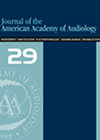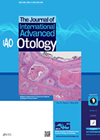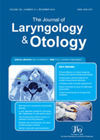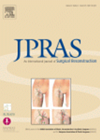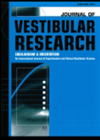
Journal Reviews archive for 2015
Factors affecting hearing aid recommendations
There is a wide variety of hearing instruments available to the hearing impaired. Hearing care professionals are often confronted with making decisions on which to recommend based on audiometric and non-audiometric parameters (e.g. vision, manual dexterity and vanity). The factors...
Speech audiometry tests in elderly patients with mild cognitive impairment
This paper caught my eye because, with our ageing population, mild cognitive impairment and dementia are a major, growing problem. We know that ageing causes a multitude of medical and social issues. So it seems wise to investigate the effects...
Adjuvant intratympanic steroid therapy in sudden sensorineural hearing loss
Sudden sensorineural hearing loss (SNHL) means abrupt hearing loss by 30dB affecting three consecutive frequencies within 72 hours. This is treated by high tapering doses of systemic steroids, the role of which is controversial and fraught with possible complications in...
Peritonsillar abscess - an indication for tonsillectomy?
Extension of infection beyond the tonsil results in a peritonsillar abscess and is a frequent emergency presentation in otolaryngology. In many places one episode of peritonsillar abscess is not considered an indication for emergency or interval tonsillectomy and future episodes...
Endoscopic findings and prediction of outcome in unilateral vocal cord paralysis
Unilateral vocal cord paralysis which is not due to irreversible causes such as malignancy, systemic disease or trauma varies considerably in terms of full recovery and restoration of voice. Usually electromyography is used to make possible predictions, but this facility...
Hearing aids or grommets for children with OME?
Otitis media with effusion is a highly prevalent condition in children and recurrence often occurs after surgical treatment with grommets. Repeated grommet insertion has its own problems of infection, perforation and scarring of the tympanic membranes, and continuity of providing...
Semi dynamic reconstruction of the lower lip
The main goal of reconstructive surgery for facial paralysis is the restoration of smiling and function of eye closure. The deformity of the lower lip in paralysis is ptosis of the corner of the mouth, eversion of the vermillion and...
Nasal deformity following CPAP injury
Nasal continuous positive airway pressure (nCPAP) is commonly used as a non-invasive alternative to endotracheal intubation and tracheotomy to provide respiratory support to very low birth weight (VLBW) (<1500 g) neonates. Nasal injury is a well recognised complication and figures...
A new flap for the perinasal region
Perinasal defects are most commonly caused by tumour extirpation or trauma. There are a number of methods to reconstruct the defect, and the method chosen depends on the size of the defect and other patient considerations. When the defect is...
Vestibular migraine – the story so far and the work still to do
This interesting discussion paper begins with an overview of the background to the development of vestibular migraine as a separate diagnostic category. It discusses in some depth the diagnostic uncertainties in the context of an entity without a biomarker and...
Hearing preservation after Gamma knife in vestibular schwannomas
This retrospective study reports the outcomes of hearing preservation up to three years after Gamma knife radiosurgery for Gardner-Robertson Class I (SDS>70% and PTA <30dB) patients with vestibular schwannomas. The authors report that patients with no subjective or objective hearing...
Rare, aggressive pituitary adenomas
This is a review article on published cases of the rare Crooke’s pituitary adenoma. These tumors are usually invasive and may be clinically aggressive; they may be endocrinologically silent or may produce adrenocorticotropic hormone causing Cushing’s disease. They often recur...

